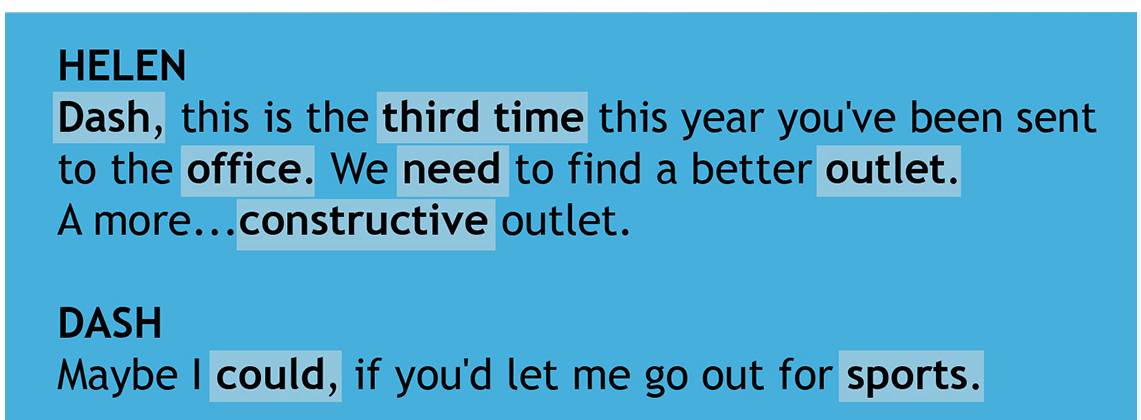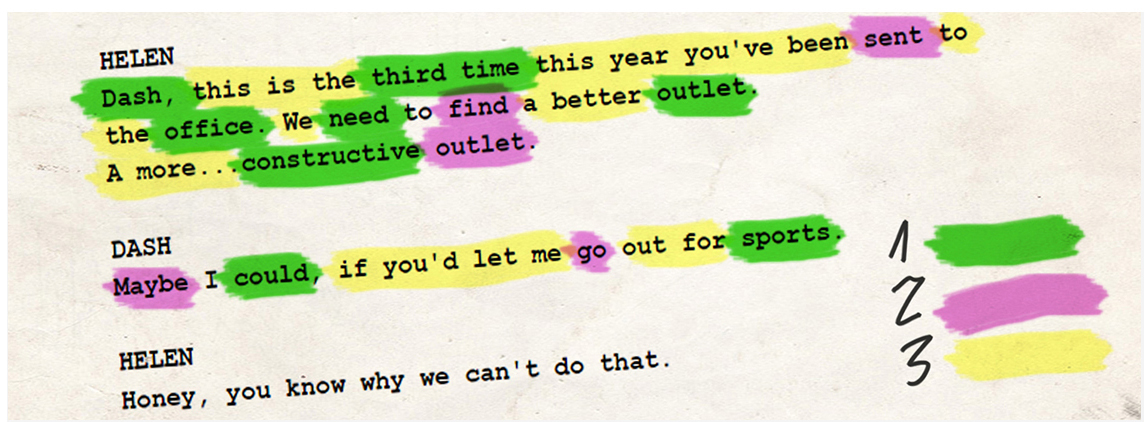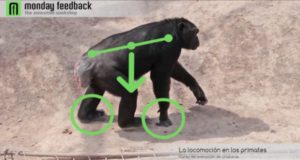One of the most common mistakes when facing a lip-sync, is to try to make our characters vocalize all the words in the dialogue. Without a doubt, the result will be a run-over lip-sync that will cost us a great job to simplify. To avoid this problem, the first thing we have to understand is the concept of hierarchy in the dialogue.
All the actions that human beings carry out are oriented to survival. We try to achieve the maximum wasting the minimum energy possible. When we want to send a message, we concentrate all our energies on the most important parts of the message and put the accents on them in the dialogue, to ensure that the recipient captures their semantic and emotional significance.
In the same way, when an actor plays a role, he emphasizes with greater intonation the keywords in order to understand the message. But, to better understand these concepts, let’s take as an example this small fragment of the movie "The Incredibles".
If we analyze the video and listen to the audio carefully, we will see that within the dialogue there are some words that are more accentuated than others.
For example, in Helen's dialogue, we find the following accentuated words:
Dash: It's the child's name and she uses it to get his attention.
Third time: She wants to remark that it is the third time he gets into a mess.
Office: It's the place where she doesn't want to see him again.
Need, Outlet and Constructive: She needs to imply that she has to spend her time on something constructive .
In the case of Dash, the most outstanding words would be Could and Sports, with which he wants to emphasize to his mother that he would like to practice some sport.
These words are the keywords! These are the words on which the actors have to put their emphasis because without them the message would not be understood. Moreover ... if we delete the rest of the words, the message would be equally understood. .
But if we listen to the dialogue again, we will realize that not everything is black or white. We will see that there is a hierarchy with different levels of intensity in the dialogue, from the keywords that are the strongest, to words that practically disappear among the others. Before starting the animation of the shot, our mission is to establish a hierarchy in the dialogue, by first setting the keywords and the following two lines in the hierarchy in order to decide which words are important in the dialogue and which are not. Next, when doing the lip-sync it will be as simple as marking first the keywords in a clear and convincing way. Secondly, mark within the lip-sync those words that we have marked within the second line of importance. Lastly, try to simplify those parts of the sentence marked within the third rank of the hierarchy in the dialogue. It is about analyzing the strength of each word in the dialogue and giving it the same importance in our animation.
By treating the dialogue in this way, your problems will end and you will never make again in your animations a run over and unintelligible lip-sync. I hope the advice helps you and focusing on a lip-sync will never suppose a problem for you again.
 MAXI DIAZ Animation blog
MAXI DIAZ Animation blog








